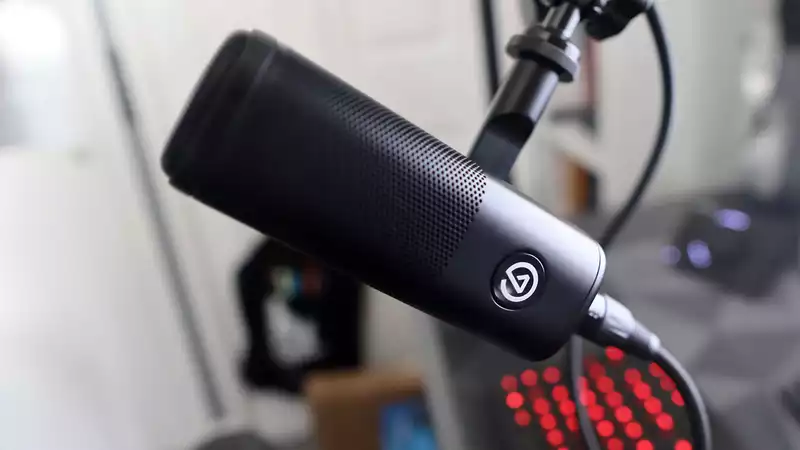I have tested several microphones and have never had the pleasure of using an XLR microphone. The connector has been around since the 1950s and has become the de facto standard for most audio equipment, including microphones, among professionals. As streaming has become a more popular medium, XLR microphones have taken on a new lease of life as content creators seek to create the best content possible.
This has resulted in the release of many great XLR mics for professional use, like Shure's SM7 and Rode's Procaster, which streamers have also come to use. In the last couple of years, Corsair-owned brands like Elgato have made a name for themselves with the best all-around kit for streamers, from the Stream Deck to a series of key lights.
The Elgato Wave DX is the latest (and potentially best) entry in their microphone lineup, and as you can probably guess, it's an XLR one.
Being an XLR mic, the Wave DX was a bit tricky to set up. It is not the most plug-and-play device in the world, in the sense that you plug in one cable and the mic works. Instead, you need to have a few things on hand, and you need to go through a number of steps.
To make the Wave DX actually work, you need the microphone itself, an XLR cable (sold separately, but any XLR cable will do), and some form of interface. The mic should work with any XLR interface, but for uniformity and convenience, I use Elgato's own Wave XLR.
After jumping through a few hoops and setting up the Wave DX on a mic arm (there is no tripod stand in the box), you are ready to go. Setup is much easier than I thought, literally just a handful of cables to connect. What's worth noting here is how well made every part of this kit is, and how simple it is to operate: the Wave DX has a minimalist, elegant appearance. Interestingly, the Wave DX has a built-in pop filter, rather than the unwanted bulk of other microphones with shock mounts and external pop filters. It is made of metal and is quite sturdy. The boom arm and Wave XLR interface are similarly made of plastic, but they don't feel the least bit cheap.
Of course, the most important thing about a microphone is its sound, and the Wave DX sounds great. It produces vocals with body, along with excellent clarity. The only problem is that some repellent sounds are still accompanied by a bit of a grating hiss, proving that while the built-in pop filter provides a way to remove harsh sounds from a more design perspective, an external physical barrier may provide a more reliable method.
The Wave DX provides a unidirectional polar pattern that is ideal for voice, but interestingly, it is not a condenser microphone like many other affordable options. Instead, the Wave DX is a dynamic microphone, which is better suited for capturing louder noises. Because it is a dynamic microphone, it does not require an external power supply, unlike XLR-based condenser mics. If you want to use a condenser XLR microphone with the Wave XLR interface, the Wave XLR interface can provide the 48V phantom power needed to operate a condenser XLR microphone.
Elgato's XLR microphones canceled most background noise beautifully. In addition, plug-ins can be added to further cancel noise. This leads to support for VST plug-ins, including Elgato's own EQ, which can tweak various frequencies of the voice.
At this point, I realized I had not mentioned the actual price of the Wave DX and, of course, the various kits needed to make it work. The microphone itself is $99/£110, which is one of the more affordable XLR mics. Adding the other parts needed to make it work gets a bit more cumbersome and actually costs more than the mic itself: the Wave XLR interface is $160/$160 lb, the boom arm is $90/$90 lb, and the XLR cable (sold separately) is $20/$20 lb. In short, to get all of this, you'll pay close to $400/£410, which falls somewhat outside the "affordable" category.
Overall, though, the Wave DX is a great mic with excellent clarity and full-bodied audio that should take your streaming and content creation game to the next level. It's fairly pricey with all the kit bundled in, but if you need a sleek, minimalist looking setup for your stream, this is a good choice.
.

Comments